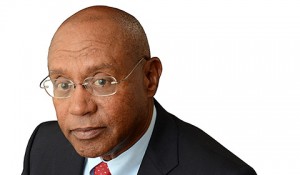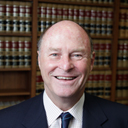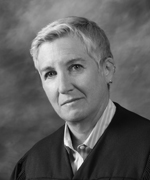We assume when we go to court the judge will be impartial and give equal weight to both sides arguments and make a thoughtful, just decision based on law and precedent. If you go to court in California as a self-represented litigant as we did, you soon learn that justice is a myth. Between judges who assume you do not have an attorney because you do not have a viable case or other reasons, and the corporate law firms that will lie and cheat to win their cases, people in court without attorneys representing them have little chance of success.
Judges have a duty to make disclosures of potential conflicts of interest anytime “a person aware of the facts might reasonably entertain a doubt that the judge would be able to be impartial.” The California Code of Judicial Ethics canon 3.E(2)(a) provides “[a] judge shall disclose information that is reasonably relevant to the question of disqualification under Code of Civil Procedure section 170.1, even if the judge believes there is no actual basis for disqualification.”
Our nightmare began in 2005 when we purchased our home in East Oakland, California. Unknown to us at the time, the mortgage broker we used forged, backdated and altered figures on the loan application used to obtain the mortgage. We did not learn about this fraudulent document until 2011 when we received the forgery along with other loan related documents. In 2005 when we were going through the loan process I had a feeling that something was not right, but nothing about the process caused us to see a red flag warning of the fraud.
After receiving the forged document we started investigating how to go forward. I spoke with attorneys, none of whom were willing to take on the case because as one told me “you cannot win.” I assumed with such a blatant case of fraud, the case would be winnable. What those attorneys did not explain was that the reason you cannot win. Because of the bias of judges and the court system the system is corrupted. The courts in California have been taken over by the influence of the big law firms that represent the banks and big corporations. Judges rely on clerks and others to do the work for them. Corners are cut by all in the court system, and often judges fail to even read papers, and leave all the work to clerks and research attorneys. Assumptions are made and facts are ignored. Judges and justices take the easy way out based on the parties and the attorneys representing them. Those viewed as the most powerful, win. Underlying this shortcut is the appeal process where the party who is the respondent in the appeal becomes the representative of the court’s decision. No judge wants a non-attorney defending their decision in an appellate court.
We made the decision to go forward on our own and filed a case in Alameda County Superior Court in February 2012. The case was assigned to Judge Marshall Ivan Whitley. I can now say that I doubt Judge Whitley read a single document in the case. Because Judge Whitley never disclosed his connection to defendants in the case I assume all the work was done by clerks and research attorneys and the judge never reviewed any of the papers in the action.
Judge Whitley had connections to three defendants in our case that required disclosure on the record. Two of those defendants, Najarian Loans, Inc (now NL, Inc.) and RPM Mortgage (RPM) are effectively the same company, alter egos in legal terms, because they have the same board of directors and operate from the same address. Wells Fargo Bank was named as a party because in October 2011 Bank of America told us Wells Fargo owned our mortgage. After we filed suit Wells Fargo alleged that a securitized trust they are trustee for, SARM 2005-15, owned the mortgage. To this date no one has been able to provide definitive proof of the identity of the owner of our loan. What we were unaware of at the time was that Judge Whitley had multiple loans with these parties, and in March 2012, the month after he was assigned the case, he signed for a new loan with RPM and Wells Fargo agreed to subrogate the loan they had previously made to Whitley to the new RPM loan. Considering ours was a case involving fraud in the origination of the mortgage for our home purchase, the fact that the judge was involved in originating a new home loan with defendants in the action while handling our case is important. This is exactly why “a person aware of the facts might reasonably entertain a doubt that the judge would be able to be impartial.” Even though Judge Whitley had a duty to disclose this information he was silent. Most of the defendants demurred to our complaint, but three parties did answer. In October 2012 Whitley sustained the demurrers allowing us leave to amend. As a result we filed a first amended complaint (FAC). All of the defendants demurred to the FAC and instead of consolidating the hearings as he had done with the demurrers to the original complaint, Whitley bifurcated the hearing dates. About half the defendants had a hearing in early January 2013 and the others for April 2013. At the January hearing Whitley sustained the demurrers but without leave to amend the complaint. He dismissed our complaint against those defendants. Bifurcating the hearing dates meant we would not be able to appeal all the decisions in a single action because the time limit to appeal is 60 days after the ruling. We filed an appeal to the first dismissals in March 2013. Before the hearing on the second set of demurrers, Whitley retired as a judge. The case was assigned to Judge Ballachey, who immediately disqualified himself and the reason for the recusal was never disclosed.
The case was then assigned to Judge Lawrence John Appel. In May 2013 Judge Appel sustained the demurrers without leave to amend, citing in his ruling Judge Whitley’s October rulings as a major part of the basis for his decision. We then appealed Appel’s decision, creating a second case in the appellate court.
The first appellate case was assigned to a three judge panel that included an Alameda County Superior Court judge, Steven Brick, who was serving as a Justice Pro Tem for the appellate court. Unknown to us at the time, Ju[dge]stice Brick was retired from the law firm of Orrick Herrington & Sutcliffe (Orrick). One of Orrick’s long-time and ongoing clients is Wells Fargo. That would not create a conflict, but what does create the conflict is that according to Brick’s Statement of Economic Interests, Form 700, he receives between $10,000 and $100,000 in retirement income from Orrick each year. That does create a conflict because Brick is compensated by Wells Fargo through Orrick. Under the California Code of Judicial Ethics canon 3E(4) appellate justices are charged with disqualifying “himself or herself in any proceeding if for any reason: (a) the justice believes his or her recusal would further the interests of justice; or (b) the justice substantially doubts his or her capacity to be impartial; or (c) the circumstances are such that a reasonable person aware of the facts would doubt the justice’s ability to be impartial.” Brick had more conflicts than the Orrick money. Whitley was Brick’s supervising judge when Brick was first appointed to the bench in Alameda County. Given that Whitley had just retired, it would have been a slight to rule against his former supervising judge in ruling on the appeal. Brick wrote the opinion for the appeal that affirmed Whitley’s ruling with the other two justices agreeing. Unfortunately, in September 2013 when the appellate decision was issued, we did not know about any of these conflicts. We did not research the issue of judicial conflict because a judge has a duty to disclose his conflicts or to recuse him/herself.
Further research revealed that Brick has another troubling conflict in his resume. According to his resume he is a founding member, past President, and presently a member of the Board of Governors of the Northern California Chapter of the Association of Business Trial Lawyers (ABTL). Because of his membership in the ABTL and his position as a judge Brick receives “education” from the exact groups of lawyers we were battling in our case. On its website the ABTL declares it is “dedicated to promoting a dialogue between the California bench and bar on business litigation issues.” According to financial disclosures, Brick has regularly attended the annual meeting of the ABTL and ABTL has paid his way to the event, an amount that is near $2000 dollars annually. The Code of Civil Procedure section 170.9 prohibits a judge from accepting “gifts from a single source in a calendar year with a total value of more than two hundred fifty dollars ($250).” Unfortunately, the same code section provides a loophole that allows for unlimited spending on judges when it is for certain purposes, like attending an ABTL event .
The second appeal in our case went to the same division of the appellate court, but this time two of the justices on the panel hearing the case were not involved in the first appeal. The newest member on the panel was Therese Stewart, the first openly lesbian justice in the State of California who was appointed to the court in 2014 shortly before our case was heard. Shortly before the hearing on our case, the law firm of Bryan Cave which was representing Bank of America, MERS, and Wells Fargo substituted in a new lawyer, Robert Esposito, to handle the oral arguments. Esposito had worked with Stewart in defending gay marriage. Stewart had led the City of San Francisco effort to defend gay marriage, and Esposito was working with attorneys at his law firm Bryan Cave filing briefs in support of the positions Stewart was advocating in representing the San Francisco. Clearly they know each other and have worked together on finally legalizing the emotional issue of gay marriage. There is no doubt gay marriage is very important to Justice Stewart and Mr. Esposito, and that is exactly why Justice Stewart should have recused herself.
We learned of Judge Whitley’s disqualification just before we were to file our reply brief in the second appeal. We raised the issue at that time. In the ruling that affirmed the trial court ruling, the appellate court said we had not brought the issue to them in our opening brief and therefore they would not consider the issue. Case law is very clear, the rulings of a disqualified judge are void or voidable, either way they do not count.
We went back to Judge Appel and asked to have the earlier rulings thrown out because of the disqualifications of Whitley and Brick. After filing the writ proceeding to get the earlier rulings thrown out, we looked into Judge Appel’s economic disclosures. What we found was that he has between $300,000 and $3 million in money market accounts being managed by Bank of America and their subsidiaries. We then filed a verified statement objecting to the hearing before Judge Appel, as provided for in the Code of Civil Procedure section 170.3. The statement set forth the facts constituting the grounds for disqualification of the judge. Under the code a judge has ten days to respond with “a written verified answer admitting or denying any or all of the allegations contained in the party’s statement and setting forth any additional facts material or relevant to the question of disqualification.” At the last minute on the last day to respond, Judge Appel responded, but did not admit or deny the allegations in our statement, but instead made claims about the evidentiary value of the facts contained in our verified statement. Appel could have asked another judge to rule on the matter, or he could have recused himself, but he did neither. Instead he forced us to go the next step which was to file a writ of mandate with the appellate court to disqualify the judge. The case was again assigned to the First Appellate District, Division Two, where we had been with both of our appeals.
The appellate court summarily denied the writ. This meant there was no written ruling explaining why Judge Appel was not disqualified. The justice who signed the order? Therese Stewart who has a conflict through her connection to Mr. Esposito.
After four years in the court system, we did not have a single ruling issued that did not involve a judge or justice who did not have some reason to disqualify themselves. I have filed complaints with the California Commission on Judicial Performance. I wrote three letters to the presiding judge of the Alameda County Superior Court. No one has done anything about these abuses. As the Commission on Judicial Performance (CJP) admitted in its June 2012 report, over a 20 year period the CJP dismissed over 90 percent of the complaints it received but even worse the CJP dismissed over 98 percent of complaints received from litigant/family/friend were dismissed. The CJP does not provide explanation for dismissals.
The Center for Judicial Excellence put out a report last month using the CJP’s own data showing how few complaints are investigated. This report followed up on a a report by Joseph Sweeney of Court Reform LLC that compared the prosecution of judges in California by the CJP to prosecutions of judges in Arizona, Texas, and New York. California has by far the lowest rate of judicial discipline.
The California Supreme Court explained the purpose of the CJP: “In making our independent determination of the appropriate disciplinary sanction, we consider the purpose of a Commission disciplinary proceeding-which is not punishment, but rather the protection of the public, the enforcement of rigorous standards of judicial conduct, and the maintenance of public confidence in the integrity and independence of the judicial system. (Adams v. Commission on Judicial Performance (1995) 10 Cal.4th 866.)
The checks and balances built into the Code of Civil Procedure and the Code of Judicial Ethics are not working. It is time to change the laws to restore public confidence in the judicial system. It is time for the legislature to clean up this mess and bring justice to the so-called system of justice we have in this state.




